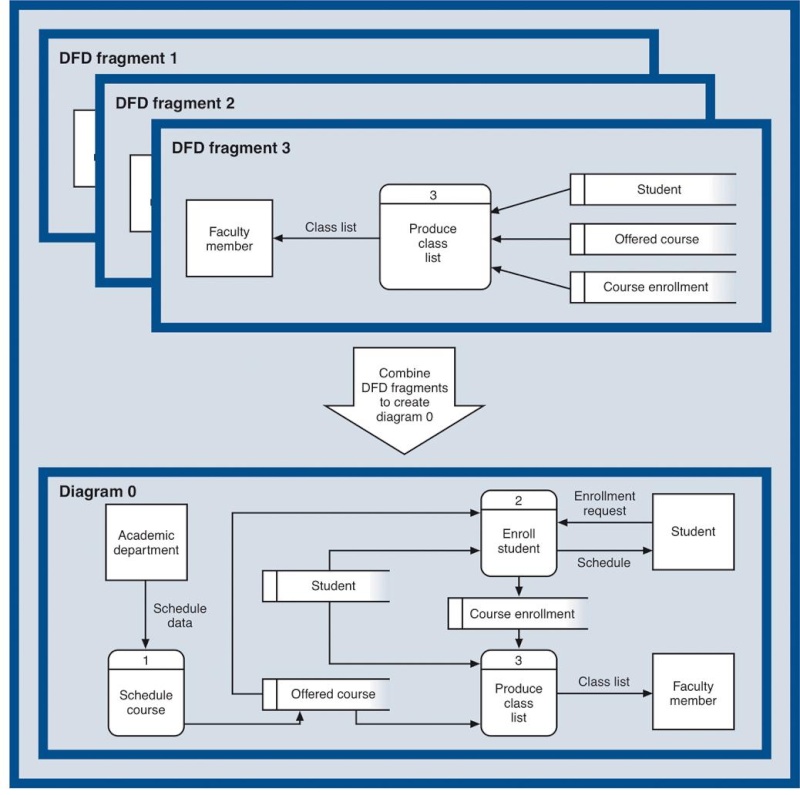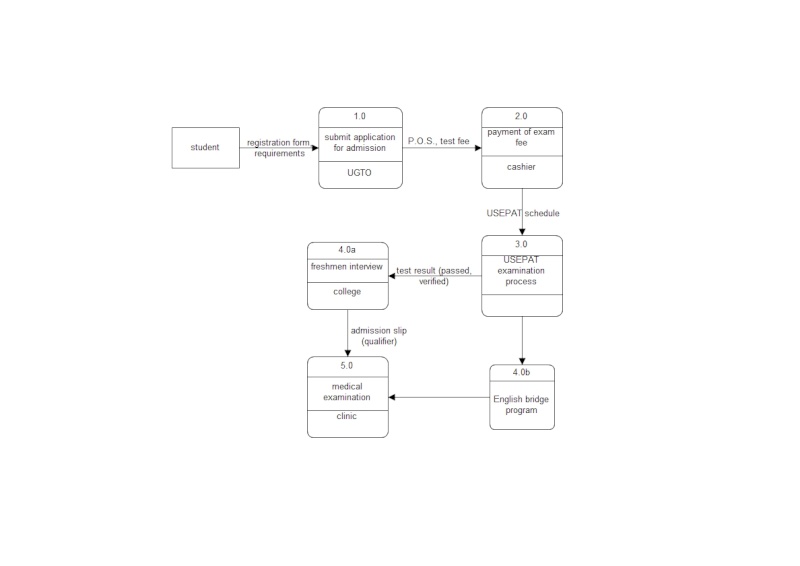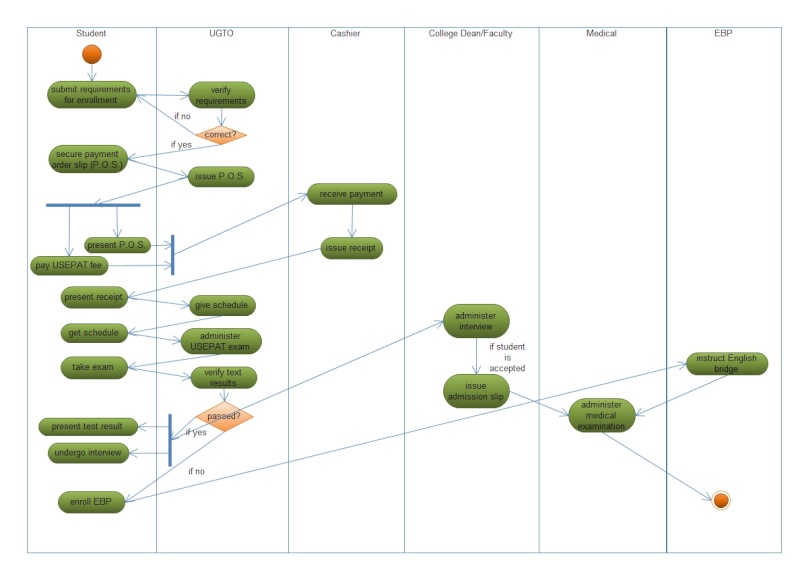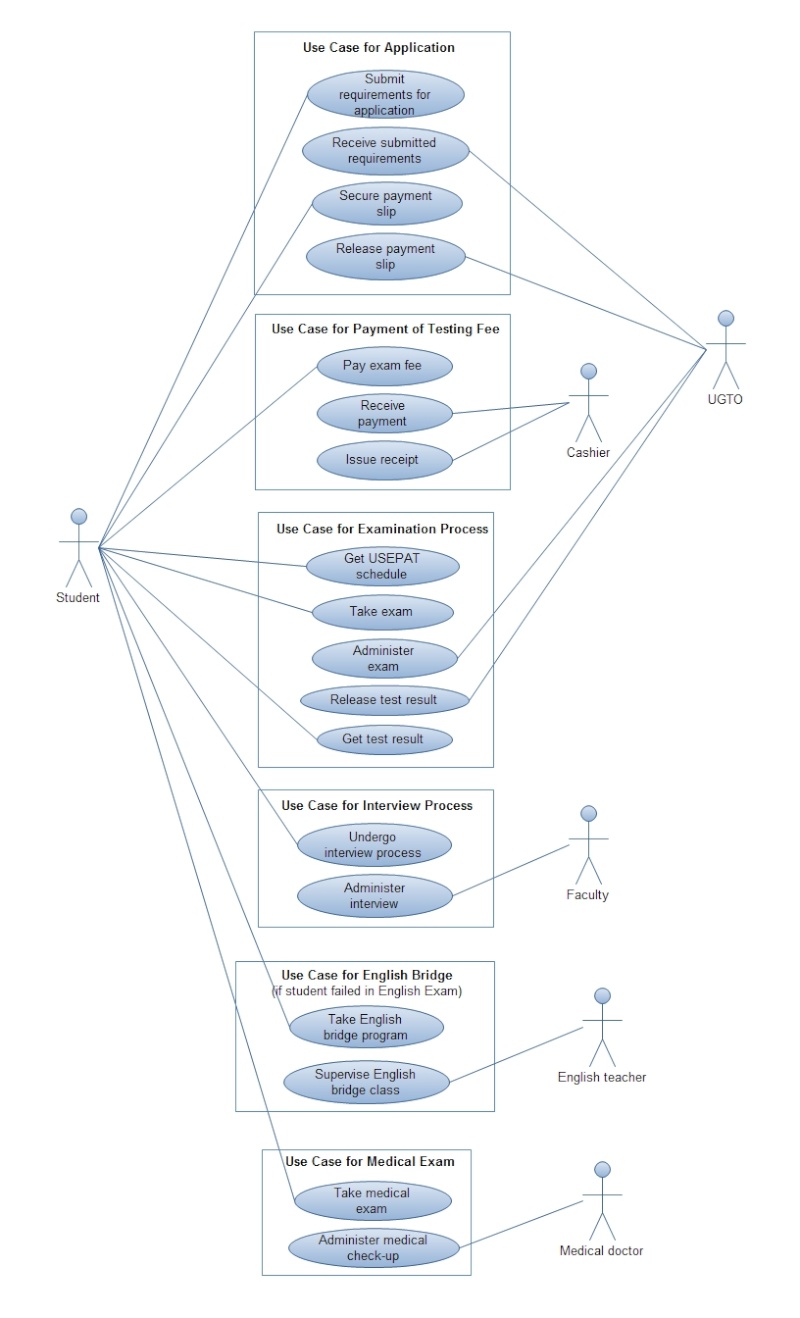(Note: This is a reply to Mr. G.'s thread in USeP-IC Web Forum - Assignment 11: You were tasked by the IC-dean to evaluate the enrollment system of the university, list and briefly describe the characteristics that an anlayst(you) examines when choosing or defining deployment environment.)
The enrollment system of our university has always been under the bird’s-eye view of us, students and faculty as well from the Institute of Computing. It is one (or shall I say the most conspicuous part of the university) that it is constantly mentioned in most discussions especially when we talk of information systems. And now that we are undertaking system analysis and design and software engineering subjects, we investigate more of the systems and subsystems that have been developed, being executed and running, and those that need to be built and / or improved. That was quite reasonable, folks, of course where else could we first take a look upon except our own, right?
Our professor (allow me to acknowledge thou, Sir) has been encouraging us to feel and not just visualize the concrete view of information systems and experience the reality in the information technology industry, and a way of that is simply to study the systems and subsystems inside the university. Frankly speaking, there is a lot more that has to be examined, brought up to the administration’s attention, systems inside the campus which needs improvement. As a student and part of the university, I am one of the recipients of the services of the school; I am one of those who are affected by its functions; and I am also one responsible for its development and progress. Since we are all part of it, we are accountable for its degeneration and advancement for the simple reason that we fuel the university’s business.
If I were to evaluate (supposed the IC dean tapped me to do so), the status of the enrollment system of the university is running as to its functions. But I can not say that the system is up for its promptness, orderliness, and efficiency. We have experienced tapping the support of an outsource company in the operation of the enrollment system. Later on the administration withdrew because of the financial aspect – the university is spending much on the outsourcing part. So they tapped our able and competent faculty members who later on developed an information system which is now being used in the enrollment process. Furthermore, this system is still ongoing its enhancement as business continues. As I have said, there is still a lot more to improve in the current system. We have to cope up with the fast pace of technology, and taking into account the growing population of students enrolling, the university business has to meet the demands of its constituents and the industry in the present day.
Anyone may be able to point out where in particular the system needs boosting up. As long as he/she knows in detail the components that make up the system and its running procedure, he/she can target and list down the possible crucial points within the information system. For me, a system analyst has to have fundamental nature of curiosity. It is important to be curious about your environment, for this will give you the drive to examine deeper the things and events occurring within your surroundings. In the enrollment system, as an analyst I have to get to know what is happening in the procedures so I may know the problems and the causes of such. From which, I can use logical methods in solving these problems. That includes researching and understanding the systems and related subsystems. Choosing and defining the deployment environment needs a keen eye for details. One cannot easily lay out the structure of the system without specifying in details the necessary requirements. Of course an analyst has to clearly identify the outline of the expected system and without being able to target the appropriate elements he/she will not be able to address the problems eventually not making a well-defined output. Aiming for accuracy and completeness must also be possessed by a system analyst. When you intend to do something, you aspire to achieve the best solution you could ever give which meets the difficulty or hindrance. You have to define the functionalities of your system once deployed in an environment. In determining these, your goal in mind is to maximize its performance to its functions. Moreover, an analyst should anticipate possible changes that may take place in the future so he/she should be open and able to adapt to these changes. This will also reflect in the flexibility of system or deployment environment the analyst is choosing or defining.



Acknowledgment:
Microsoft Encarta Dictionary and Thesaurus





Our professor (allow me to acknowledge thou, Sir) has been encouraging us to feel and not just visualize the concrete view of information systems and experience the reality in the information technology industry, and a way of that is simply to study the systems and subsystems inside the university. Frankly speaking, there is a lot more that has to be examined, brought up to the administration’s attention, systems inside the campus which needs improvement. As a student and part of the university, I am one of the recipients of the services of the school; I am one of those who are affected by its functions; and I am also one responsible for its development and progress. Since we are all part of it, we are accountable for its degeneration and advancement for the simple reason that we fuel the university’s business.
If I were to evaluate (supposed the IC dean tapped me to do so), the status of the enrollment system of the university is running as to its functions. But I can not say that the system is up for its promptness, orderliness, and efficiency. We have experienced tapping the support of an outsource company in the operation of the enrollment system. Later on the administration withdrew because of the financial aspect – the university is spending much on the outsourcing part. So they tapped our able and competent faculty members who later on developed an information system which is now being used in the enrollment process. Furthermore, this system is still ongoing its enhancement as business continues. As I have said, there is still a lot more to improve in the current system. We have to cope up with the fast pace of technology, and taking into account the growing population of students enrolling, the university business has to meet the demands of its constituents and the industry in the present day.
Anyone may be able to point out where in particular the system needs boosting up. As long as he/she knows in detail the components that make up the system and its running procedure, he/she can target and list down the possible crucial points within the information system. For me, a system analyst has to have fundamental nature of curiosity. It is important to be curious about your environment, for this will give you the drive to examine deeper the things and events occurring within your surroundings. In the enrollment system, as an analyst I have to get to know what is happening in the procedures so I may know the problems and the causes of such. From which, I can use logical methods in solving these problems. That includes researching and understanding the systems and related subsystems. Choosing and defining the deployment environment needs a keen eye for details. One cannot easily lay out the structure of the system without specifying in details the necessary requirements. Of course an analyst has to clearly identify the outline of the expected system and without being able to target the appropriate elements he/she will not be able to address the problems eventually not making a well-defined output. Aiming for accuracy and completeness must also be possessed by a system analyst. When you intend to do something, you aspire to achieve the best solution you could ever give which meets the difficulty or hindrance. You have to define the functionalities of your system once deployed in an environment. In determining these, your goal in mind is to maximize its performance to its functions. Moreover, an analyst should anticipate possible changes that may take place in the future so he/she should be open and able to adapt to these changes. This will also reflect in the flexibility of system or deployment environment the analyst is choosing or defining.
Acknowledgment:
Microsoft Encarta Dictionary and Thesaurus









